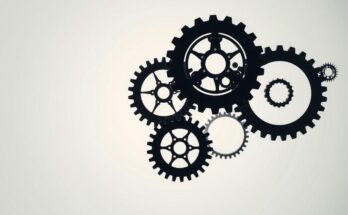Automation enhances production efficiency and safety while reducing costs and material waste. Although it leads to job displacement, it also decreases work hours and elevates product quality. Significant investment is required for automation, and maintaining a balance between technology and human involvement is crucial for future progress.
Automation stands as a transformative force in modern manufacturing and industry, weaving efficiency, cost-savings, and robotics into a sophisticated tapestry of progress. At its heart, automation elevates production by enhancing output rates and productivity, ensuring that materials are utilized more effectively while minimizing waste. The result? Products that not only meet but exceed quality benchmarks, crafted with an unwavering consistency that human workers, however skilled, find hard to replicate. Imagine machinery humming in perfect harmony, each part performing its role without hesitation, producing goods with precision and care. Moreover, automation isn’t just a boon for the bottom line; it also acts as a guardian for worker safety. By minimizing human presence in potentially hazardous environments, it serves to protect workers from the perils often found in factories. This shift is not just a matter of corporate responsibility but aligns with initiatives like the Occupational Safety and Health Act of 1970 (OSHA), which champion the cause of worker safety and have effectively propelled the adoption of automation technologies in workplaces across the United States. As we dive deeper into the ramifications, one cannot overlook the impact on the workforce. While automation fosters a reduction in average work hours—from a staggering 70 hours per week in 1900 to a more reasonable 40 hours—there’s a bittersweet undercurrent. The machines that enhance efficiency also render certain jobs obsolete, leading to worker displacement. The journey to retrain and reintegrate these individuals can provoke significant emotional turmoil, often compounded by the necessity of geographical relocation in search of new employment opportunities. On the flip side, while automation promises a future brimming with possibilities, it demands considerable financial investment—asserting a hefty upfront cost that can soar into millions for designing, fabricating, and implementing such systems. Additionally, these advanced setups may require more meticulous maintenance compared to traditional equipment, and paradoxically, they might limit flexibility in production capabilities compared to the adaptable hands of skilled labor. Yet as we gaze into the horizon of innovation, certain foreboding concerns arise. The specter of technology subjugating humanity looms large, raising alarms about potential dependencies and invasions of privacy perpetuated by vast data networks. The delicate balance between leveraging technology for human enhancement and capitulating to its demands is a challenge we must navigate carefully. Despite these concerns, the apex of automation aligns with the promise of a brighter future. If harnessed judiciously, this technological wave can liberate individuals from monotonous, treacherous work, ultimately paving the way for a world where the quality of life flourishes as our standard of living ascends to new heights. The narrative of automation continues to unfold, one with the potential to reshape industries and create a landscape where humans thrive alongside their mechanical counterparts, living richer and more fulfilling lives.
Automation has revolutionized how industries operate, blending technological advancements with the age-old quest for efficiency and productivity. As factories evolve, the role of human labor is being redefined amid the integration of robotics and complex automated systems, pushing towards a future where machines take on more responsibilities. This transition is not without its implications, affecting workers, economies, and societal structures. Understanding this shift helps illuminate the benefits and challenges that come with it, highlighting the balance we must seek between progress and the well-being of the workforce.
In summary, automation stands as a double-edged sword, presenting opportunities for efficiency and safety while posing challenges related to worker displacement and financial investment. As we embrace this technological tide, it is imperative to navigate its complexities mindfully, ensuring that it enhances human life rather than diminishes it. Through wise application, automation has the capacity to redefine our future, leading us towards a world where both machinery and humanity thrive.
Original Source: www.britannica.com


